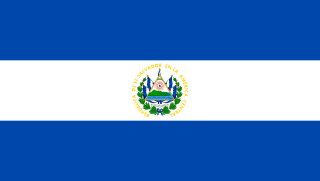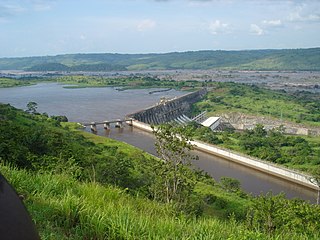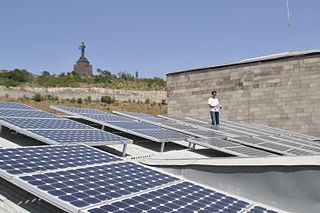
Solar power in India is an essential source of renewable energy and electricity generation in India. Since the early 2000s, India has increased its solar power significantly with the help of various government initiatives and rapid awareness about the importance of renewable energy and sustainability in the society. In order to decrease carbon dioxide emissions, reduce reliance on fossil fuels, with coal being the primary source of electricity for the nation at present, bolster employment, economy and make India energy independent by making self-reliant on renewable energy, the Ministry of New and Renewable Energy was formed in 1982 to look after the country's activities to promote these goals. These collaborative efforts, along with global cooperation with the help of International Solar Alliance (ISA) since 2015 for promoting solar energy worldwide while also taking care of India, have made India one of the world's fastest adopters of solar power, making it the third-largest producer of solar power globally as of 2024, after China and the United States.
For solar power, South Asia has the ideal combination of both high solar insolation and a high density of potential customers.
The electricity sector in Honduras has been shaped by the dominance of a vertically integrated utility; an incomplete attempt in the early 1990s to reform the sector; the increasing share of thermal generation over the past two decades; the poor financial health of the state utility Empresa Nacional de Energía Eléctrica (ENEE); the high technical and commercial losses in transmission and distribution; and the low electric coverage in rural areas

In Honduras, there is an important potential of untapped indigenous renewable energy resources. Due to the variability of high oil prices and declining renewable infrastructure costs, such resources could be developed at competitive prices.

The electricity sector in Colombia is dominated by large hydropower generation (65%) and thermal generation (35%). Despite the country's large potential for new renewable energy technologies, this potential has been barely tapped. A 2001 law designed to promote alternative energies lacks certain key provisions to achieve this objective, such as feed-in tariffs, and has had little impact so far. Large hydropower and thermal plants dominate the current expansion plans. The construction of a transmission line with Panama, which will link Colombia with Central America, is underway.

The electricity sector in Bolivia is dominated by the state-owned ENDE Corporation, although the private Bolivian Power Company is also a major producer of electricity. ENDE had been unbundled into generation, transmission and distribution and privatized in the 1990s, but most of the sector was re-nationalized in 2010 (generation) and 2012.
The electricity sector in Argentina constitutes the third largest power market in Latin America. It relies mostly on thermal generation and hydropower generation (36%). The prevailing natural gas-fired thermal generation is at risk due to the uncertainty about future gas supply.
The electricity sector in Peru has experienced large improvements in the past 15 years. Access to electricity has increased from 45% in 1990 to 96.4% in 2018, while service quality and efficiency of service provision improved. These improvements were made possible through privatizations following reforms initiated in 1992. At the same time, electricity tariffs have remained in line with the average for Latin America.

Nicaragua is the country in Central America with the lowest electricity generation, as well as the lowest percentage of population with access to electricity. The unbundling and privatization process of the 1990s did not achieve the expected objectives, resulting in very little generation capacity added to the system. This, together with its high dependence on oil for electricity generation, led to an energy crisis in 2006 from which the country has not fully recovered yet.

El Salvador's energy sector is largerly focused on renewables. El Salvador is the largest producer of geothermal energy in Central America. Except for hydroelectric generation, which is almost totally owned and operated by the public company CEL, the rest of the generation capacity is in private hands. With demand expected to grow at a rate of 5% in the coming years, the Government's 2007 National Energy Strategy identified several hydroelectric and geothermal projects as the best option to meet demand in the future and to diversify the country's energy mix.

The Democratic Republic of the Congo was a net energy exporter in 2008. Most energy was consumed domestically in 2008. According to the IEA statistics the energy export was in 2008 small and less than from the Republic of Congo. 2010 population figures were 3.8 million for the RC compared to CDR 67.8 Million.

In 2019, the total energy production in Indonesia is 450.79 million tonnes of oil equivalent, with a total primary energy supply of 231.14 million tonnes of oil equivalent and electricity final consumption of 263.32 terawatt-hours. From 2000 to 2021, Indonesia's total energy supply increased by nearly 60%.

Renewable energy in Nepal is a sector that is rapidly developing in Nepal. While Nepal mainly relies on burning biomass for its energy needs, solar and wind power is being seen as an important supplement to solve its energy crisis. The most common form of renewable energy in Nepal is hydroelectricity.
Three primary energy sources make up the energy mix in Guinea: fossil biomass, oil and hydropower. Biomass makes the largest contribution in primary energy consumption. It is locally produced, while Guinea imports all the petroleum products it needs. The potential for hydroelectric power generation is high, but largely untapped. Electricity is not available to a high percentage of Guineans, especially in rural areas, and service is intermittent, even in the capital city of Conakry.

This article describes energy and electricity production, consumption, import and export in Kenya. Kenya's current effective installed electricity capacity is 2,651 megawatts (MW), with peak demand of 1,912 MW, as of November 2019. At that time, demand was rising at a calculated rate of 3.6 percent annually, given that peak demand was 1,770 MW, at the beginning of 2018. Electricity supply is mostly generated by renewable sources with the majority coming from geothermal power and hydroelectricity.

Renewable energy in Bangladesh refers to the use of renewable energy to generate electricity in Bangladesh. The current renewable energy comes from biogas that is originated from biomass, hydro power, solar and wind. According to National database of Renewable Energy total renewable energy capacity installed in Bangladesh 1374.68 MW.
Formal electricity services are solely provided by the state-owned Liberia Electricity Corporation, which operates a small grid almost exclusively in the Greater Monrovia District. The vast majority of electric energy services is provided by small privately owned generators. At $0.54 per kWh, the electricity tariff in Liberia is among the highest in the world. Total installed capacity in 2013 was 20 MW, a sharp decline from a peak of 191 MW in 1989.
Myanmar had a total primary energy supply (TPES) of 16.57 Mtoe in 2013. Electricity consumption was 8.71 TWh. 65% of the primary energy supply consists of biomass energy, used almost exclusively (97%) in the residential sector. Myanmar’s energy consumption per capita is one of the lowest in Southeast Asia due to the low electrification rate and a widespread poverty. An estimated 65% of the population is not connected to the national grid. Energy consumption is growing rapidly, however, with an average annual growth rate of 3.3% from 2000 to 2007.
There is enormous potential for renewable energy in Kazakhstan, particularly from wind and small hydropower plants. The Republic of Kazakhstan has the potential to generate 10 times as much power as it currently needs from wind energy alone. But renewable energy accounts for just 0.6 percent of all power installations. Of that, 95 percent comes from small hydropower projects. The main barriers to investment in renewable energy are relatively high financing costs and an absence of uniform feed-in tariffs for electricity from renewable sources. The amount and duration of renewable energy feed-in tariffs are separately evaluated for each project, based on feasibility studies and project-specific generation costs. Power from wind, solar, biomass and water up to 35 MW, plus geothermal sources, are eligible for the tariff and transmission companies are required to purchase the energy of renewable energy producers. An amendment that introduces and clarifies technology-specific tariffs is now being prepared. It is expected to be adopted by Parliament by the end of 2014. In addition, the World Bank's Ease of Doing Business indicator shows the country to be relatively investor-friendly, ranking it in 10th position for investor protection.

Solar energy is widely available in Armenia due to its geographical position and is considered a developing industry. In 2022 less than 2% of Armenia’s electricity was generated by solar power.














